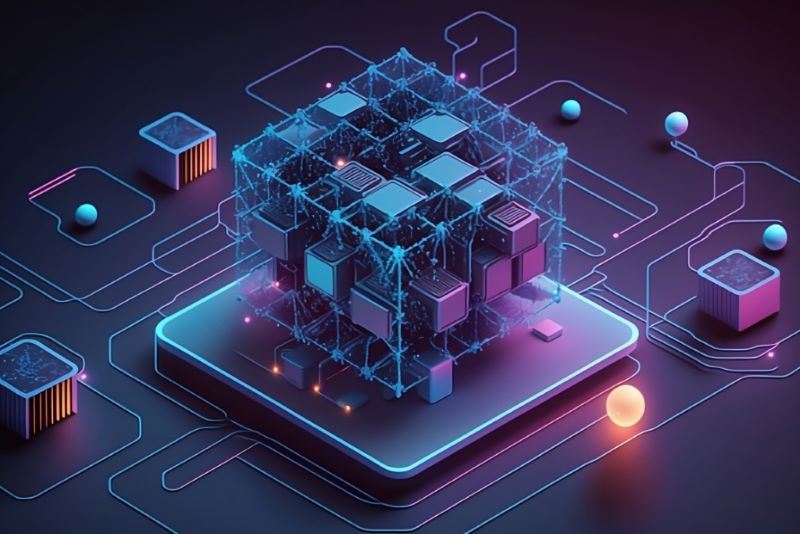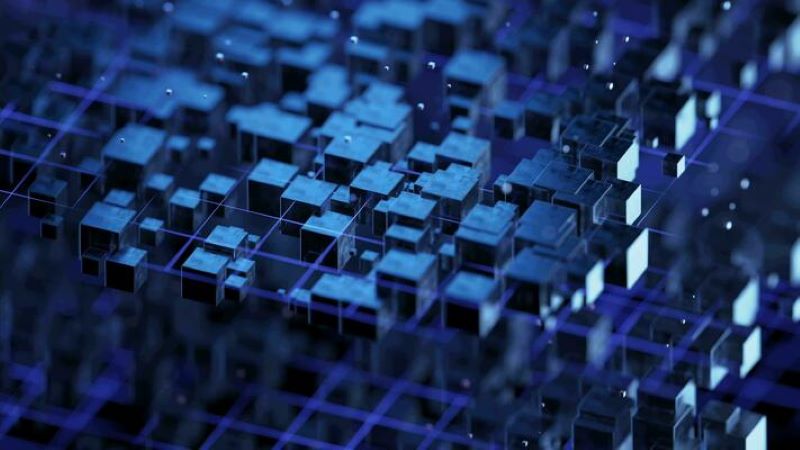Have you ever wondered what blockchain really is and why it matters? “Define Blockchain Technology” is not just a definition; it’s the key to unlocking a world of innovation. Discover how this digital ledger is transforming industries and reshaping our interactions with technology!
The Basic Structure of a Blockchain
According Define Blockchain Technology, the fundamental structure of a blockchain consists of the following key components:
Block
- Data: Each block contains information about a specific transaction or data. For example, in a cryptocurrency blockchain, data would include transaction details such as the sender’s address, recipient’s address, and the amount of currency being transferred.
- Hash: Each block has a unique hash, which is a cryptographic hash function of the block’s content. This hash acts as a digital fingerprint, identifying and securing the data within the block.
- Previous Block Hash: To maintain the chain’s integrity and linkage, each block includes the hash of the previous block. This creates a continuous chain of blocks.
Blockchain
Define Blockchain Technology highlights the characteristics of the blockchain, including:
- Linked Chain: Blocks are linked together sequentially through the previous block’s hash. This forms a continuous chain, ensuring data integrity.
- Integrity: Since each block contains the hash of the previous one, any changes to a block would affect all subsequent blocks, making it extremely difficult to alter recorded data.
Consensus Algorithm
- Proof of Work or Proof of Stake: These algorithms are used to ensure that all nodes in the network agree on the state of the blockchain. Consensus algorithms protect the network from malicious activities and ensure that only valid blocks are added to the chain.
Nodes
- Storage Nodes: Each node in the network stores a copy of the entire blockchain or a portion of it. Nodes ensure that data on the blockchain is synchronized and up-to-date.
- Validation Nodes: Nodes verify transactions and blocks, checking the validity of data and maintaining the network’s integrity.
Digital Signature
- Sender’s Signature: To ensure that a transaction is valid, the sender digitally signs the transaction using their private key. This authenticates the sender’s identity and protects transaction data from being forged.
The basic structure, as define blockchain technology, helps ensure that data is stored securely, transparently, and immutably, providing the foundation for a wide range of applications such as cryptocurrencies, smart contracts, and supply chain management.

How does Blockchain Work?
The operation of a blockchain involves the following fundamental principles:
Decentralization and Distribution
- Nodes: A blockchain operates on a decentralized network of nodes, each storing a copy of the entire blockchain or a portion of it. There is no central point of control, and each node has the authority to verify and validate transactions.
- Data Synchronization: Nodes collaborate to maintain data synchronization across the network, ensuring that all copies of the blockchain are identical.
Transactions and Blocks
- Transaction Creation: According define blockchain technology, users create transactions and send them to the network. Each transaction contains information about the sender, recipient, and transaction data.
- Block Creation: New transactions are grouped together and packaged into a block. The block contains information about the transactions and the hash of the previous block, forming a continuous chain.
- Transaction Verification: Nodes in the network verify the validity of transactions by checking conditions such as digital signatures and account balances (Validity Checks). To agree on the validity of a new block, the network uses consensus algorithms like Proof of Work (PoW) or Proof of Stake (PoS). These algorithms help reach consensus and protect the network from malicious activities (Consensus Algorithm).
Security and Integrity
- Hash: Each block contains a hash of the previous block, forming a continuous chain. A hash is a string of characters representing the block’s content and helps secure data against alterations.
- Digital Signatures: Transactions are digitally signed by the sender’s private key to authenticate identity and protect transaction data from forgery.
Adding New Blocks to the Chain
- Block Validation: Define blockchain technology emphasizes the importance of Block. After a block is validated by the network, it is added to the existing blockchain. The new block becomes part of the chain and is linked to the previous block by its hash.
- Data Update: All nodes in the network update their copy of the blockchain to reflect the new transactions and block, ensuring data consistency and accuracy.
Immutability
- Difficulty in Altering Data: Since each block contains the hash of the previous block, any change to a block would affect all subsequent blocks. This makes it extremely difficult to forge or alter recorded data.
Transparency
- Verifiability: Data on a blockchain is public and can be verified by anyone participating in the network. This creates a transparent system where all transactions and changes can be tracked.

These operating principles ensure that blockchain maintains the security, transparency, and integrity of data in a decentralized environment without a central point of control. This is a one of important define blockchain technology.
Key Characteristics of Blockchain
Some key features, as define blockchain technology, are:
Decentralization
- Distributed Network: There is no central point of control. Data is stored and managed by multiple nodes in the network, each holding a copy of the entire blockchain.
- Self-Governance: Nodes have the authority to verify, validate, and record transactions, reducing reliance on a central authority.
Immutability
- Data Unchangeability: Each block in the chain contains a hash of the previous block, forming a continuous chain. If a block is altered, its hash and all subsequent block hashes would change, making it extremely difficult to modify recorded data.
High Security
- Digital Signatures: Transactions are digitally signed using the sender’s private key, authenticating identity and protecting data from forgery.
- Hashing: Hashing in define blockchain technology secures data by converting information into a fixed-length string of characters, creating a digital “fingerprint” for each block.
Transparency
- Public Data: Data on a blockchain can be publicly verified and tracked by anyone in the network. This creates a transparent system where all transactions can be audited.
Consensus Mechanism
- Agreement: Nodes in the network use consensus algorithms like Proof of Work (PoW) or Proof of Stake (PoS) to agree on the state of the blockchain. This ensures that only valid transactions are recorded on the chain.
Automation
- Smart Contracts: Blockchain supports smart contracts, self-executing pieces of code triggered when certain conditions are met. This automates processes and transactions without the need for third-party intervention.
Scalability
- Increased Throughput: While define blockchain technology on traditional blockchains may face scalability challenges, solutions like sharding and layer-2 networks are being developed to improve transaction processing capabilities.
Non-repudiation
- Transaction Confirmation: As all transactions are recorded on the blockchain and cannot be altered, no one can deny or repudiate having performed a transaction.

These characteristics in define blockchain technology that set blockchain apart from traditional data management systems and provide the foundation for diverse applications such as cryptocurrencies, smart contracts, and supply chain management.
Blockchain technology functions as a decentralized, immutable ledger that promotes transparency and security across a network of nodes. Understanding its core components reveals how blockchain is revolutionizing various sectors and paving the way for future innovations.
To stay updated on this transformative technology, follow Blockchain Global Network!

RELATED POSTS
How to join crypto airdrops for maximum returns
Crypto airdrops offer a unique...
What is the trading range of Kaspa standard deviation?
Are you interested in Kaspa...
Mapping Opportunities with Funding Rate Heatmap
In the fast-paced trading world,...
What is dYdX? A deep dive into Decentralized trading
What is dYdX? It is...
Staying Ahead: Essential Crypto Market News Updates
Sự biến động không ngừng...
U2U Token Price Prediction: Understanding the Factors Behind Its Future Growth
The world of cryptocurrency is...
What are distributed systems? Bridging the Gap Between Efficiency and Complexity
In today’s digital age, the...
Toby Airdrop: A complete guide to participation from A to Z
Participate in the Toby Airdrop...
W-coin Airdrop offers a unique tap-to-earn experience
Combined with the powerful TON...
Exploring the Use of blockchain technology in different sectors
The use of blockchain technology...
Barron Trump Crypto Scam: How the DJT Token is Raising Red Flags
The Barron Trump Crypto Scam...
Gradient Network Airdrop – How to Earn Points and Receive Rewards
Are you ready to dive...
Inflation is down why isnt crypto rallying today?
Inflation is down why isnt...
Primary versus secondary market – Understanding Clearly for Effective Investment
Primary versus secondary market are...
What is blockchain technology in simple terms for beginner
What is blockchain technology in...
Detailed steps to participate in the BSX Airdrop quickly
Are you ready to dive...